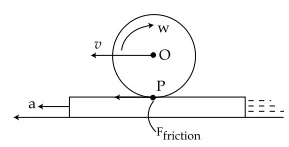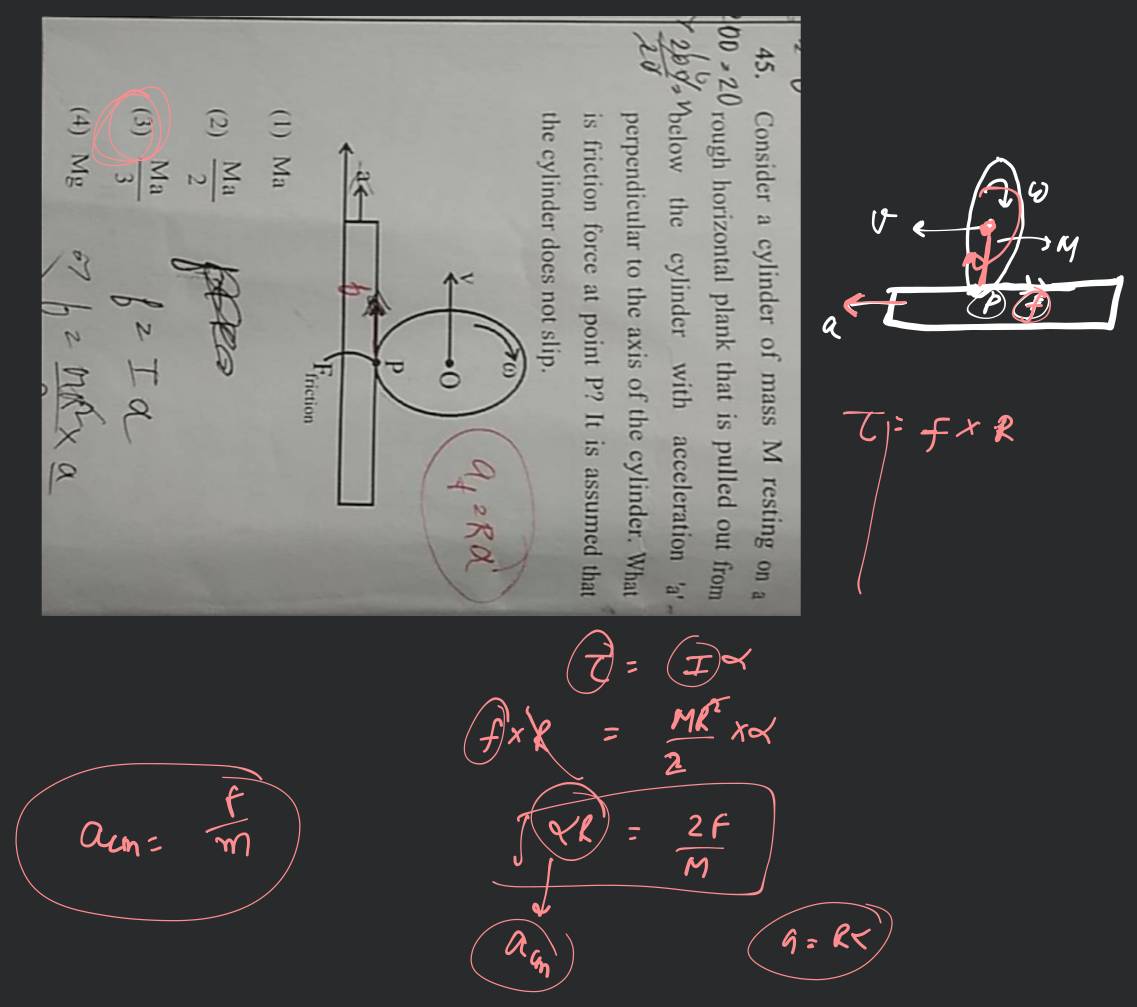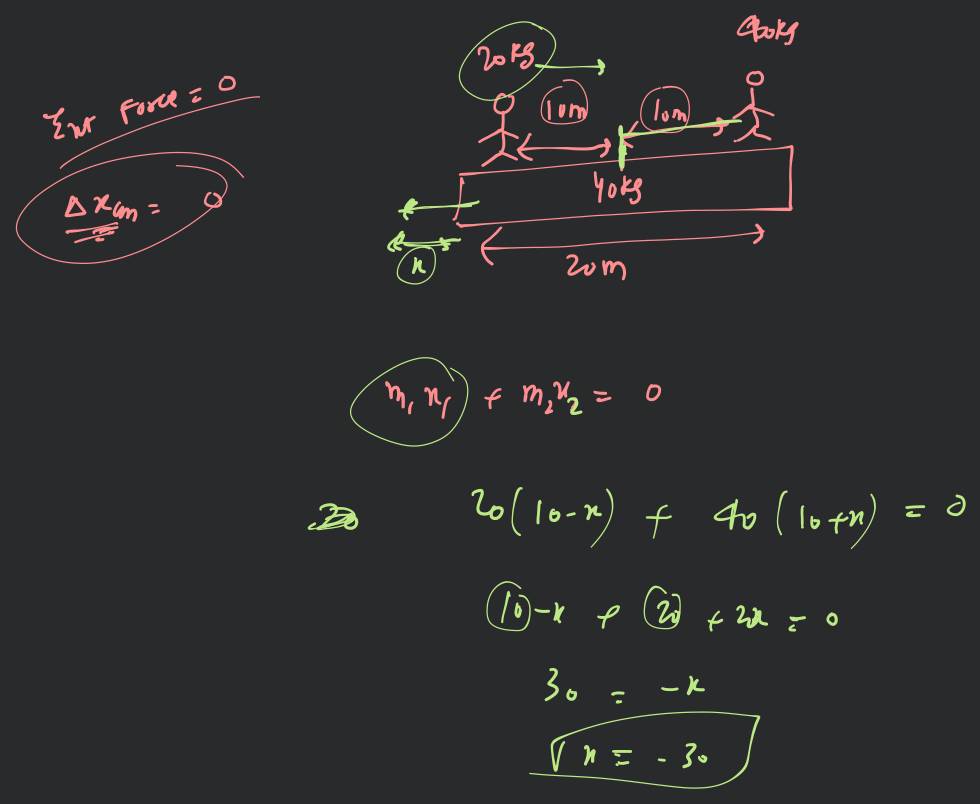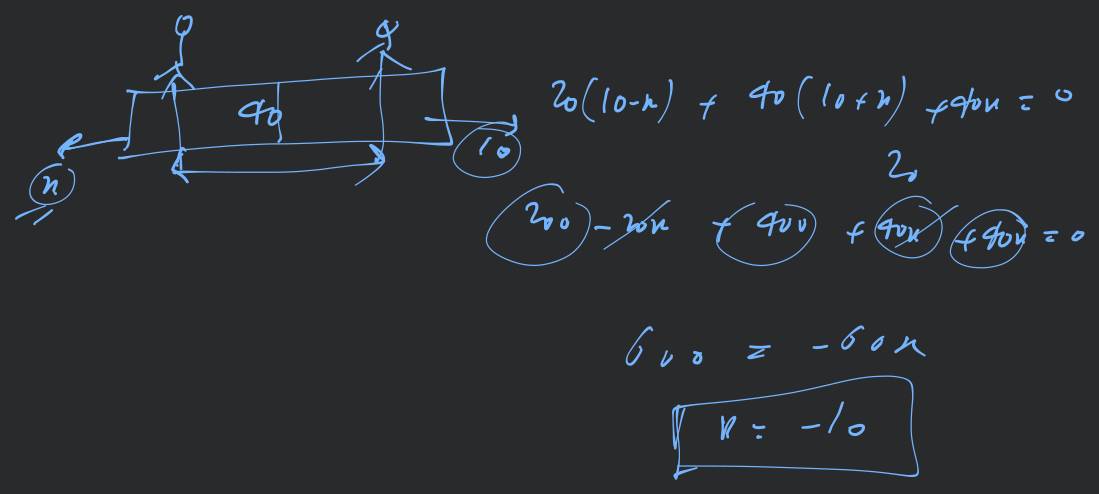Question
Medium
Solving time: 3 mins
Consider a cylinder of mass M resting on a rough horizontal rug that is pulled out from under it with acceleration ' ' perpendicular to the axis of the cylinder. What is at point P? It is assumed that the cylinder does not slip.

Found 2 tutors discussing this question
Discuss this question LIVE
12 mins ago
 Text solution
Text solution Verified
Verified
For no slipping at
Solve the equations (2) and (3)
Was this solution helpful?
60
Share
Report

One destination to cover all your homework and assignment needs
Learn Practice Revision Succeed

Instant 1:1 help, 24x7
60, 000+ Expert tutors

Textbook solutions
Big idea maths, McGraw-Hill Education etc

Essay review
Get expert feedback on your essay

Schedule classes
High dosage tutoring from Dedicated 3 experts
Practice more questions from System of Particles and Rotational Motion
Question 1
Medium
Views: 5,683
Question 2
Views: 5,251
Question 3
Hard
Views: 5,818
(a) Calculate the angle at which it loses contact with the trolley and
(b) the time taken by the mass to drop on the floor, after losing contact.
Question 4
Easy
Views: 5,792
Practice questions on similar concepts asked by Filo students
Question 1
Views: 5,031
Question 2
Views: 5,458
Question 3
Views: 5,890


Stuck on the question or explanation?
Connect with our Physics tutors online and get step by step solution of this question.
231 students are taking LIVE classes
| Question Text | Consider a cylinder of mass M resting on a rough horizontal rug that is pulled out from under it with acceleration ' ' perpendicular to the axis of the cylinder. What is at point P? It is assumed that the cylinder does not slip. |
| Updated On | Apr 18, 2023 |
| Topic | System of Particles and Rotational Motion |
| Subject | Physics |
| Class | Class 11 |
| Answer Type | Text solution:1 Video solution: 1 |
| Upvotes | 179 |
| Avg. Video Duration | 17 min |







